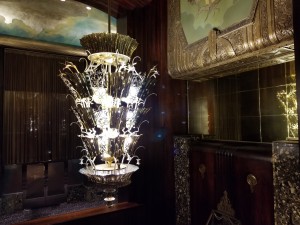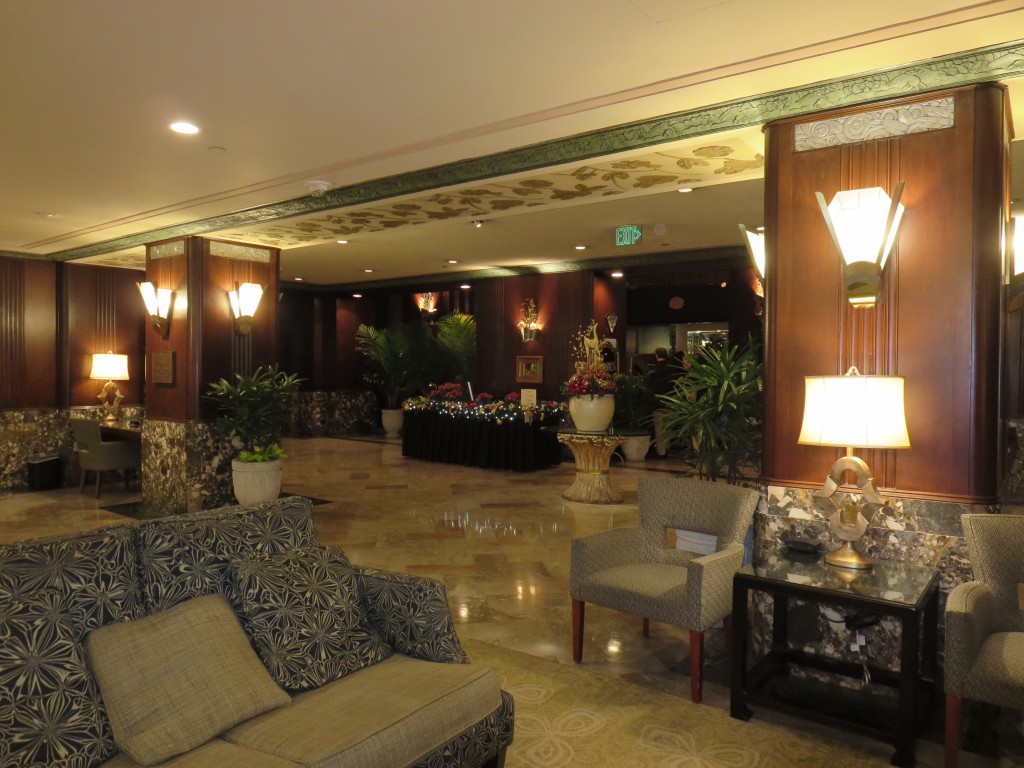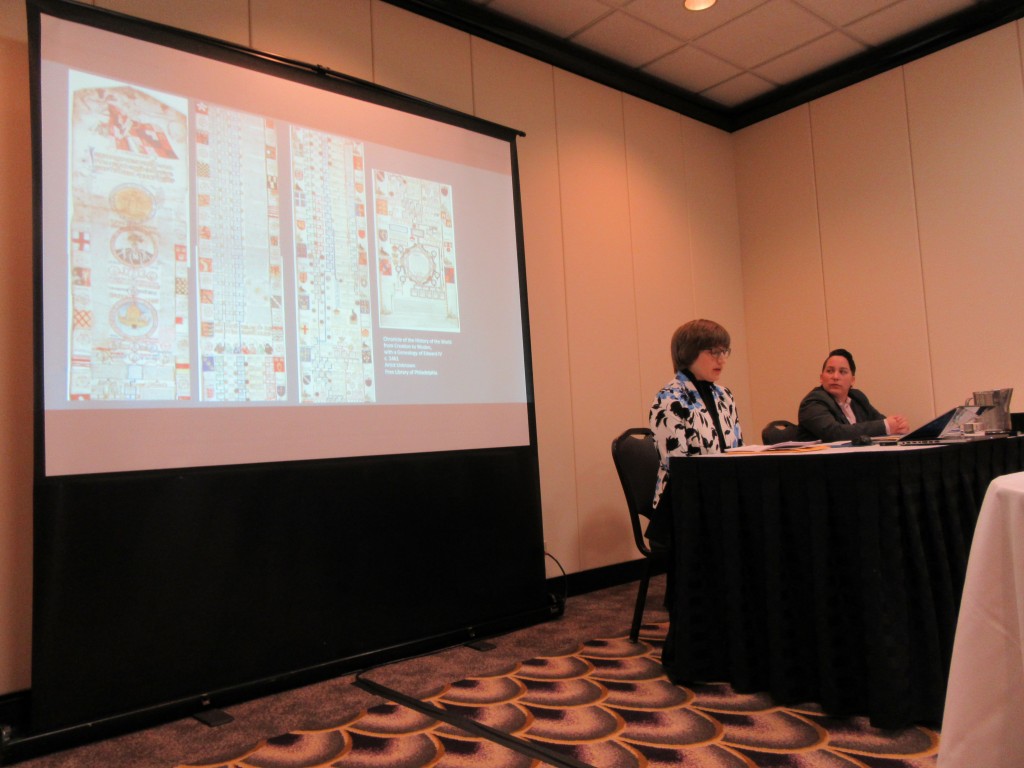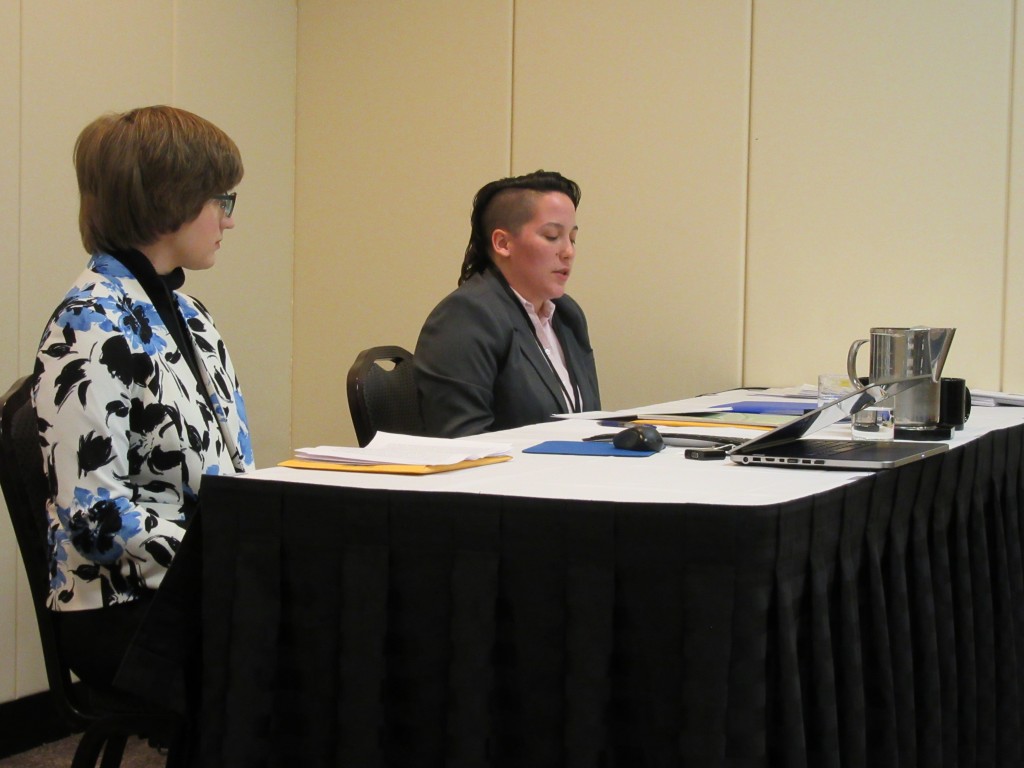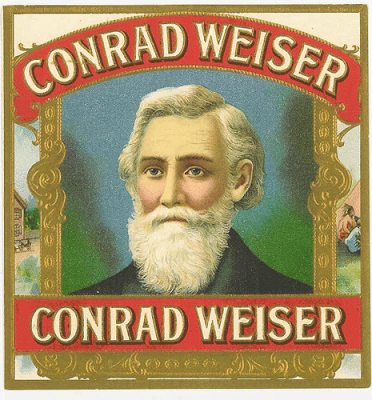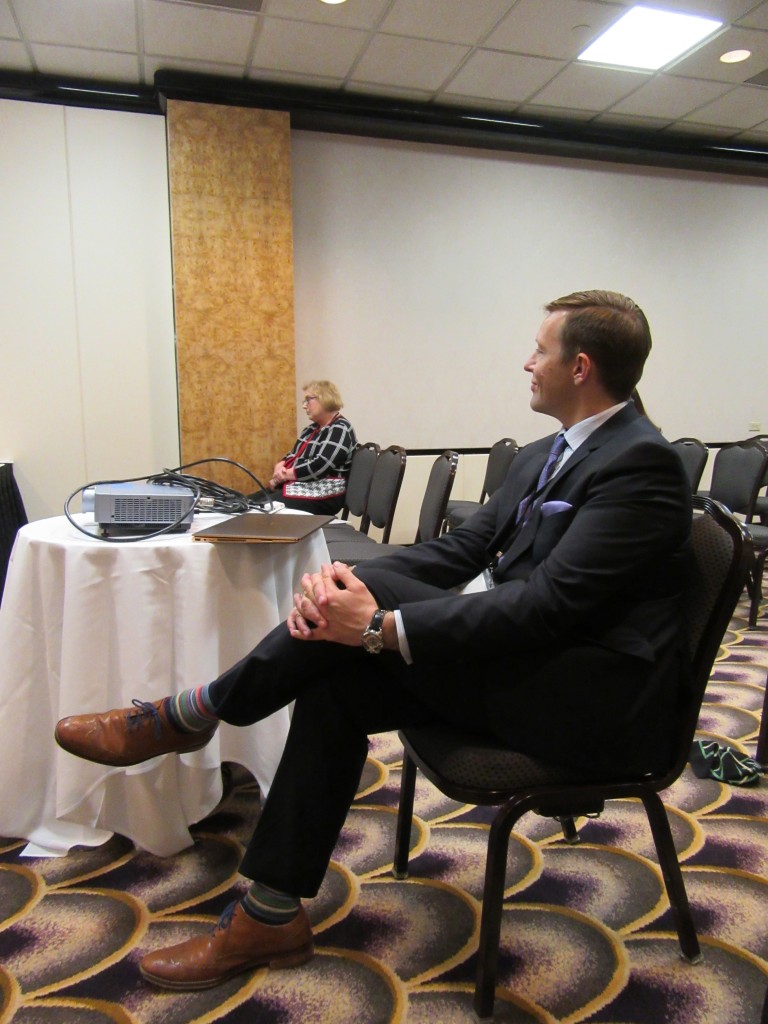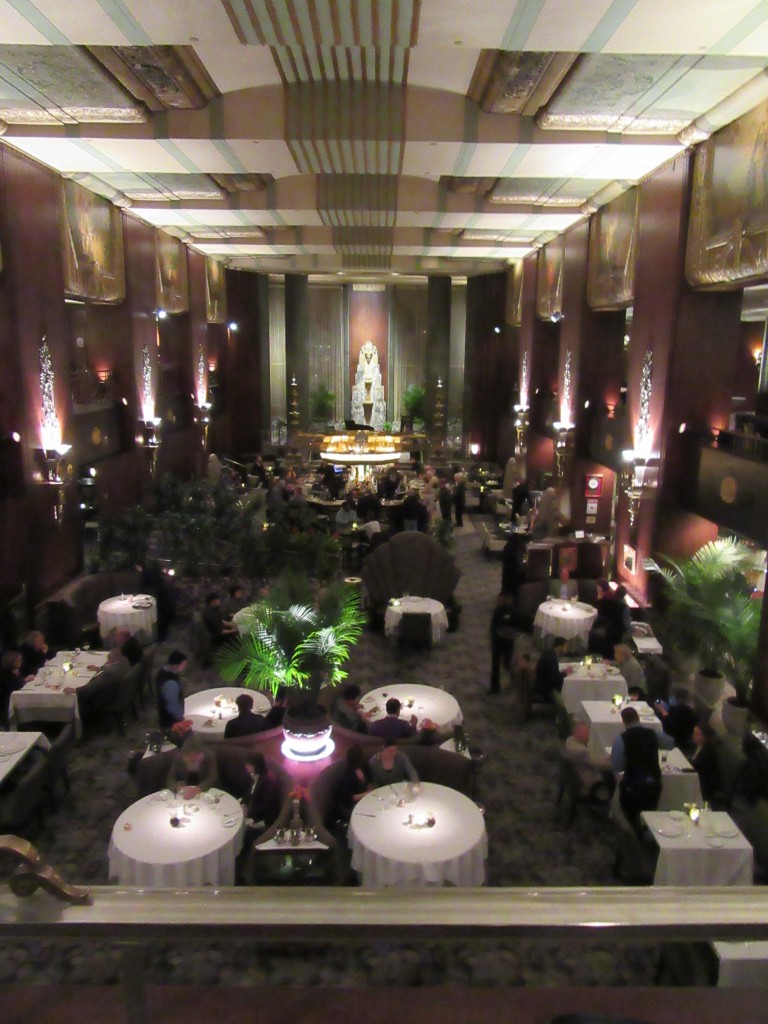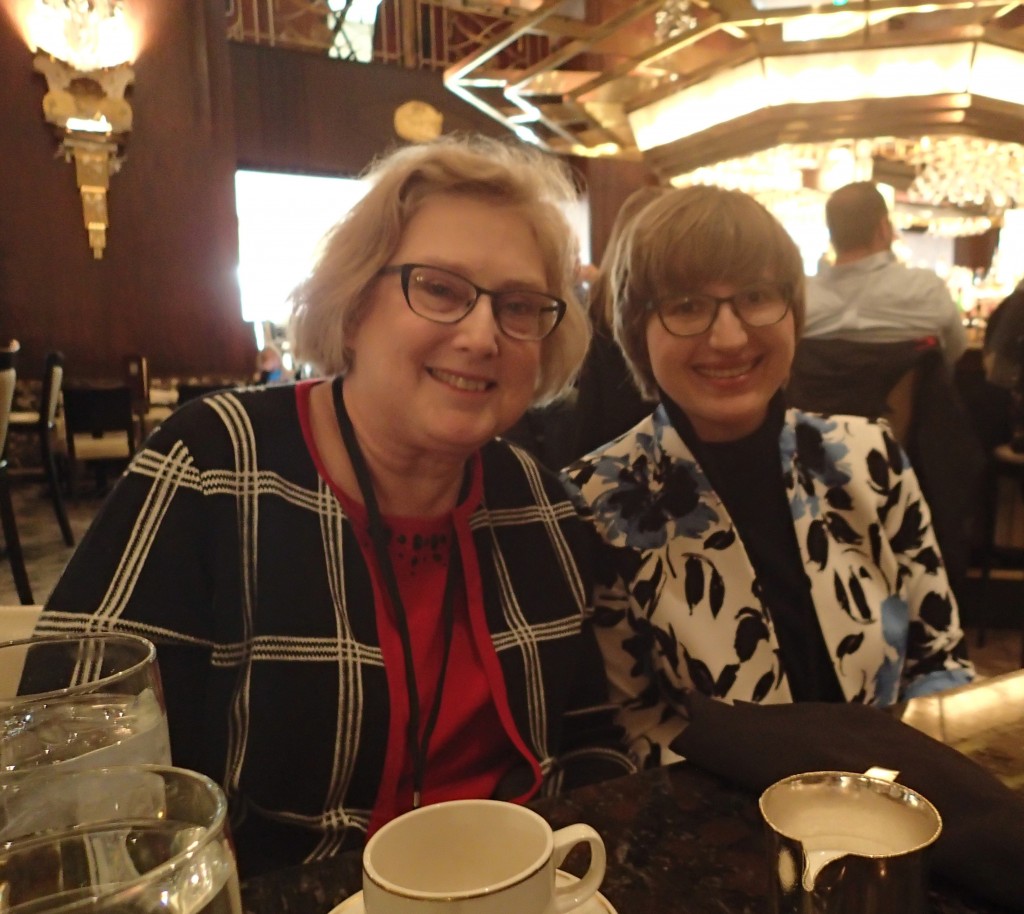2017 M-MLA Panel Report
November 14, 2017 in Abstracts of Conference Papers, Announcements, Conference, Conference Announcement, Manuscript Studies, Reports
Artists, Activists, and Manuscript Evidence
Research Group on Manuscript Evidence
Permanent Panel
at the
Midwest Modern Language Association (M-MLA)
2017 Convention
Cincinnati, Ohio
November 9-12, 2017
Our 2017 Panel
With the accomplishment of the 2017 M-MLA Convention in Cincinnati, we happily report the Permanent Panel which the Research Group on Manuscript Evidence sponsored, in the second year of its participation at the Convention. As this participation continues to build, we create a Page devoted to the Panels at the M-MLA Convention, along with our many Activities and Events.
Like last year’s pair of sponsored Panels, described in our 2016 M-MLA Report, this year’s Panel was expertly organized by our Associate Justin Hastings of Loyola University Chicago, institutional host of the Midwest Modern Language Association.
The plan for our 2017 Panel arose in responding to the theme chosen for the 2017 Convention, “Artists and Activists”. Naturally, we selected the themes of “Artists, Activists, and Manuscript Evidence”, which might include, or also include, printed books and other forms of written materials. Our Call for Papers invited contributions for multiple subjects and approaches, including textual, art-historical, codicological, and palaeographical, which might center upon facets, or stages, of the material evidence of manuscripts in their travels across time and space. The variety of responses to the Call shaped the Program for the Panel, as announced in the Convention Program Book and for our 2017 M-MLA Panel. Updates for our Announcement soon provided the Abstracts for the 3 papers, also with some images.
The time has come for the Report. You are Here.
The Venue
Now we describe the experience of the event, which took place in the convention venue, the Netherland Plaza Hotel in Cincinnati. Built in French Art Deco style at the beginning of the Great Depression, opened in 1931, and now operated as the Hilton Netherland Plaza Hotel, this building is listed as a Historic Monument.
*****
Our 2017 Panel
This Report includes some updates for the Abstracts, previously published in our announcement of the Program for the 2017 M-MLA Panel.
Make It and/or Break It:
the Material Evidence
of Creating, Using, Disseminating, and Dispersing Manuscripts
Sponsored by: Research Group on Manuscript Evidence
Organizer and Presider
Justin Hastings (Loyola University Chicago)
Presenters
1. Laura Melin (University of York, United Kingdom)
“The Coronation Roll of Edward IV and Its Audience”
Abstract:
My paper will focus on the artwork on the Chronicle of the History of the World from Creation to Woden, with a Genealogy of Edward IV (Free Library of Philadelphia, Lewis 201), otherwise known as the ‘Coronation Roll’, to see what its content reveals about possible audiences. The Roll was commissioned circa 1461 by Edward IV, who needed to legitimise his usurpation of the English throne from Henry VI in order to gain the support of both the English nobility and international noble (and royal) audiences.
I will argue that the artists of the Coronation Roll appealed to both sets of audiences through the creative use of traditional iconographies of kingship within the genealogical format. After emphasising the common use of genealogies among the nobility, both at home and abroad, I will examine three key artistic clues within the Coronation Roll:
- the strong emphasis on Edward’s personal heraldry and badges, which line the Roll and are intertwined with the genealogical table, included to appeal to the nobility’s sense of heritage and lineage;
- Edward’s equestrian portrait, which echoes similar portraits found on seals, coins, and manuscripts across Europe;
- and the inclusion of emblems such as the Order of the Garter, which would have been familiar to an international noble audience.
I will conclude by assessing available evidence to determine how the Roll might have been displayed for the visual consumption of his audience.
Note: See the manuscript online here: Coronation Roll. A version of the Arms of Edward IV appears here (from this manuscript now at The British Library):
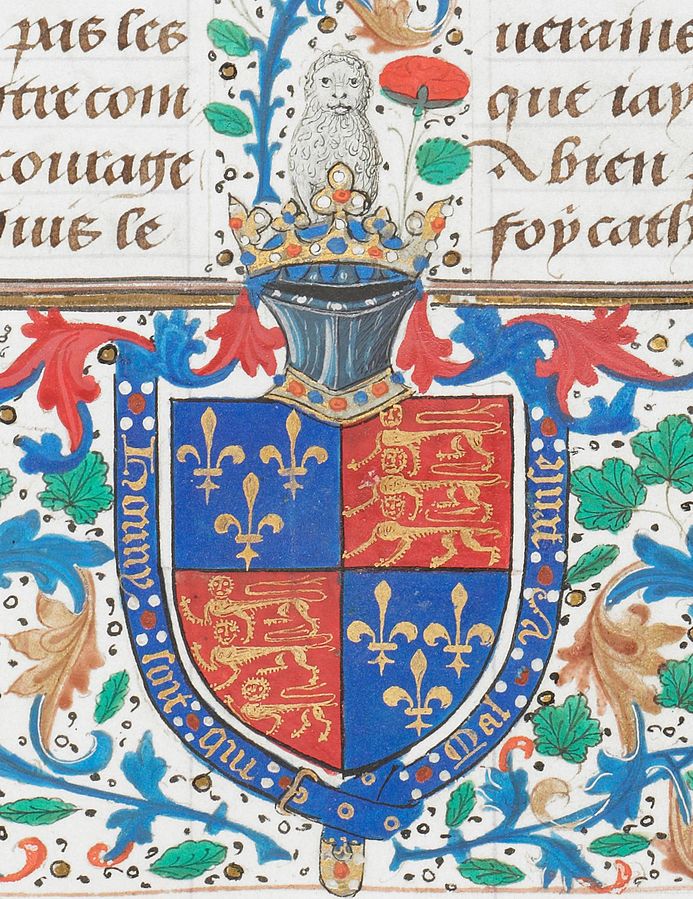
©The British Library Board. London, British Library, Royal MS 14 E. I, folio 3r, detail: Royal Arms of Edward IV.
2. Katie Gutierrez (Loyola University Chicago)
“Native American Misrepresentation in Early America:
A Study on the Variants Presented in Conrad Weiser’s Travel Narrative:
A Journal of the Proceedings of Conrad Weiser”
Abstract:
The Native American translator and colonial government official Conrad Weiser (1696–1760) is an often-overlooked figure in Early American history. As a translator for the Pennsylvanian government, Weiser occupied a unique position in both colonial America and the Iroquois nation. Conrad Weiser’s state-sponsored travel narrative, “A journal of the proceedings of Conrad Weiser: on his journey to Ohio with a message & present from the government of Pensilvania to the Indians there, 1748 Aug. 11 – Oct. 2”, exists in four separate versions. By applying a critical lens to the text, this paper will illuminate the significant changes between its versions, particularly by examining the representation of the Sinicker tribe of the Iriquois nation.
This paper will carefully outline the variants that occur over the four versions of Weiser’s travel narrative:
- Weiser’s original manuscript written in 1748,
- a copy of Weiser’s journal transcribed by his descendent Hiester Muhlenberg in 1830,
- a copy of Weiser’s journal proceedings published in the Colonial Records of Pennsylvania in 1851,
- and a reproduction of Weiser’s journal proceedings published in 1847 in I.D. Rupp’s Early history of western Pennsylvania: and of the West, and of western expeditions and campaigns from MDCCLIV to MDCCCXXXIII.
By examining these four versions simultaneously, it is evident that Conrad Weiser’s interactions with Queen Scayhuhady of the Sinicker tribe were omitted in the later versions of his document, the official colonial record book and historical book of Pennsylvania.
I will argue for a restoration of Weiser’s original 1748 travel-narrative in order to re-establish historical accuracy and to include the interactions with the Sinicker tribe omitted from later historical documents and records. This paper will attempt to answer questions of how and when changes were introduced to Weiser’s narrative and to outline themes between each set of variants that occur, as well as their importance to a modern reader.
Note: Images of Conrad Weiser appear to be scarce, little attested, or confected after the fact. We might glimpse an old image of his tombstone here.
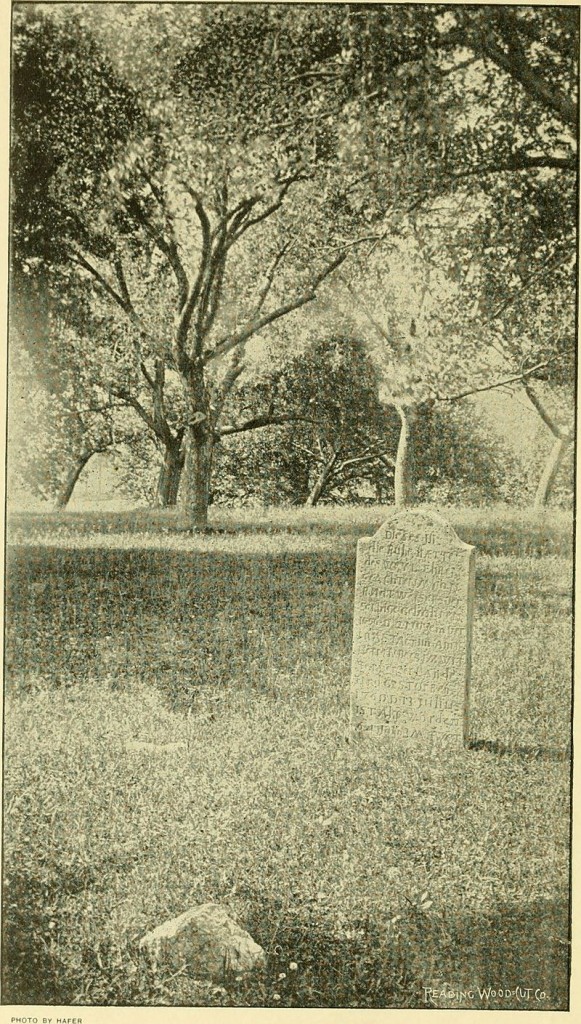
Tombstone of Conrad Weiser, from Morton L. Montgomery, “Life and Times of Conrad Weiser” (1893), via Wikipedia Commons.
Also, a fanciful or wistful image of this personage might, for example, advocate tobacco purveyance, as here:
3. Mildred Budny (Research Group on Manuscript Evidence)
“ ‘It’s amazing what you can see when you look’:
New Light on Old Manuscripts Dispersed by Otto Ege”
For this convention, in appreciation of its welcome for the Research Group on Manuscript Evidence, my report of recent discoveries on the track of groups of dispersed medieval manuscript materials focuses (but not exclusively) upon some Midwestern individuals and institutions, and upon approaches to language in communicating — more and/or less effectively — information about those materials and approaches to ways of looking.
My motto for this quest, “It’s amazing what you can see when you look”, comes from the trove of memorable quotes by, or attributed to, the renowned baseball catcher, manager, and coach Yogi Berra (1925–2015), born in Saint Louis, Missouri. Just as his catchy turns of phrase (“Yogi-isms”) encourage, or, for that matter, require, us to think, as well as rethink, so, too, does the process of looking, and looking again (even again and again), have the power to conjure forth fresh views, insights, and understandings. The term ‘conjure’ here may convey some of the steps, skills, and wondrous results in that process — when it works — of close interaction between the scholar, viewer, beholder and the materials in question.
In this case, we consider the potential for medieval (and other) manuscripts of many kinds, dates, genres, subjects, patterns of transmission, and challenges in general or particular. All the more so when accomplished cumulatively, with assembled, tested, and refined expertise, whereby, fortunately and ‘magically’, the total gain is far greater than the sum of the parts.
This paper reports new, also cumulative and collaborative, discoveries concerning some of the vast numbers of leaves detached and dispersed from their former manuscripts by the notorious bibliophile and self-styled ‘biblioclast’ Otto F. Ege (1888‒1951), whose spheres of activity mostly centered upon Cleveland, Ohio. In the past few years, as my own tasks of conservation and research regarding telling cases of those manuscript ‘strays’ or ‘orphans’, seemingly unrelated, turn out to be related powerfully in terms of linked or implicated transmission, discerned by means of discovery through expertise gathered cumulatively over the years, across a broad range of written and printed materials.
Our celebration of these rediscoveries include fresh observations of materials closer to Otto Ege’s home base. Among them are fresh views of the Ege manuscript materials at the Cincinnati Public Library of Cincinnati and Hamilton County.
Surprises await when we look.
Note: Some discoveries are reported on our website, for example here:
- A New Leaf from ‘Otto Ege Manuscript 14’
- A New Leaf from ‘Otto Ege’s Manuscript 41’
- More Leaves from ‘Otto Ege Manuscript 51’
- A New Leaf from ‘Otto Ege’s Manuscript 61’
- New Discoveries for ‘Otto Ege’s Manuscript 61’
- 2016 Symposium on ‘Words & Deeds’ Report
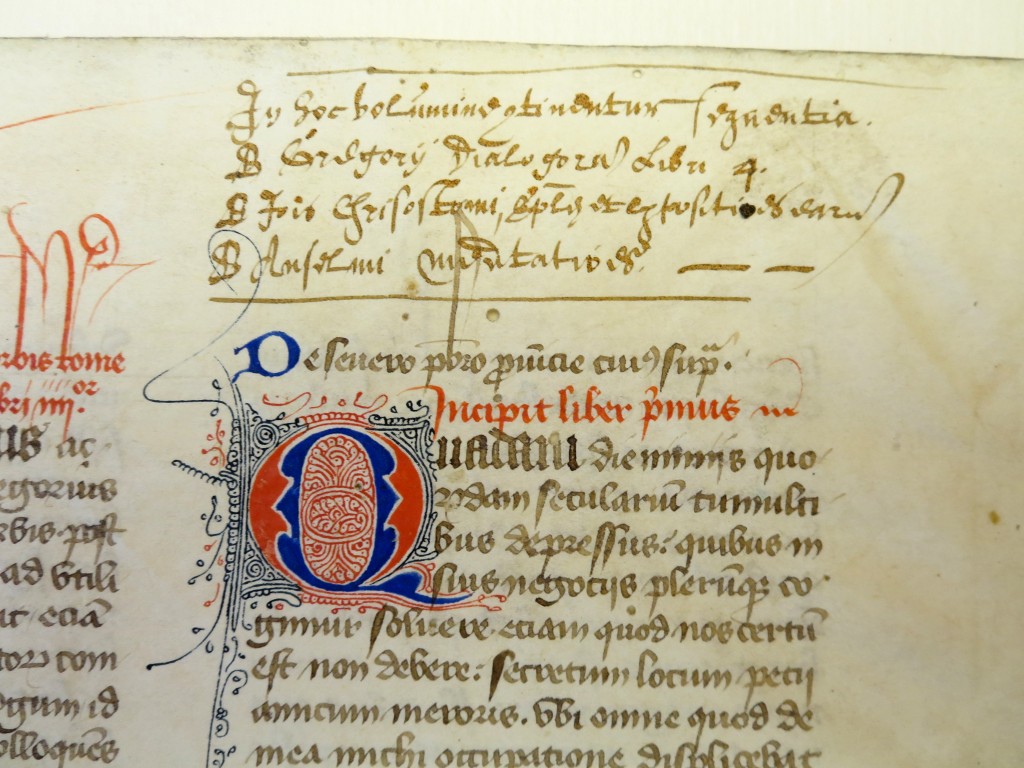
Leaf 41, Recto, Top Right, in the Family Album (Set Number 3) of Otto Ege’s Portfolio of ‘Fifty Original Leaves’ (FOL). Otto Ege Collection, Beinecke Rare Book and Manuscript Library, Yale University. Photograph by Mildred Budny.
Respondent
4. Justin Hastings
“Making, Breaking, and Using Manuscripts:
New Looks at Material Evidence”
*****
Venue, Revisited
Amazing Place.
More information about the M-MLA Convention itself appears on its website. Full details for the 2017 Annual Convention are published in its Program Book.
As Permanent Session 55 at the Convention, our sponsored panel occurred on Friday, 12 November 2017, from 11:30 a.m. to 12:45 p.m. We give warm thanks to the Midwest Modern Language Association, its Convention organizers, our hosts, our exemplary Panel organizer Justin Hastings, our Panel presenters, and our Panel audience. A wonderful occasion! We give thanks also to the staff of the Cincinnati Public Library of Cincinnati and Hamilton County for permission to examine and to photograph manuscript materials both before and after the Panel.
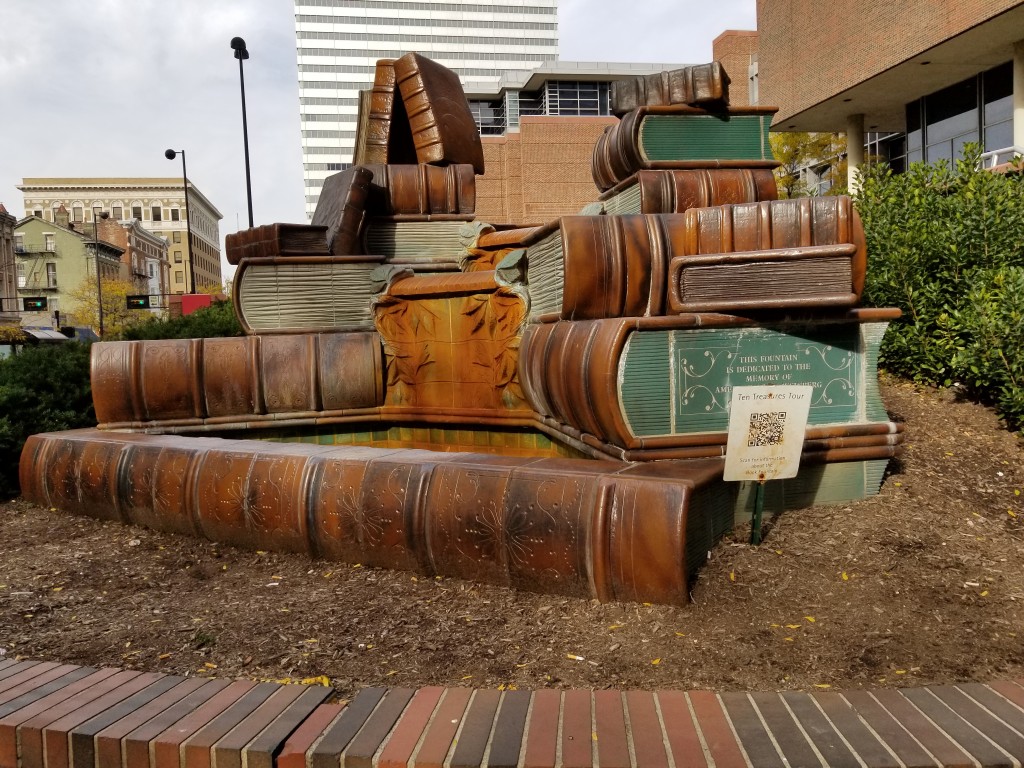
Fountain of Books outside the Main Library of the Cincinnati Public Library of Cincinnati and Hamilton County.
Invigorated by the experience and positive feedback throughout the convention, we already begin to plan for the 2018 Convention. Please join us!
*****

